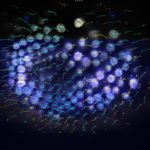Link to Pubmed [PMID] – 33224481
Link to DOI – 10.12688/f1000research.27019.1
F1000Res 2020 ; 9(): 1279
The ability of cells to migrate is a fundamental physiological process involved in embryonic development, tissue homeostasis, immune surveillance, and wound healing. Therefore, the mechanisms governing cellular locomotion have been under intense scrutiny over the last 50 years. One of the main tools of this scrutiny is live-cell quantitative imaging, where researchers image cells over time to study their migration and quantitatively analyze their dynamics by tracking them using the recorded images. Despite the availability of computational tools, manual tracking remains widely used among researchers due to the difficulty setting up robust automated cell tracking and large-scale analysis. Here we provide a detailed analysis pipeline illustrating how the deep learning network StarDist can be combined with the popular tracking software TrackMate to perform 2D automated cell tracking and provide fully quantitative readouts. Our proposed protocol is compatible with both fluorescent and widefield images. It only requires freely available and open-source software (ZeroCostDL4Mic and Fiji), and does not require any coding knowledge from the users, making it a versatile and powerful tool for the field. We demonstrate this pipeline’s usability by automatically tracking cancer cells and T cells using fluorescent and brightfield images. Importantly, we provide, as supplementary information, a detailed step-by-step protocol to allow researchers to implement it with their images.

